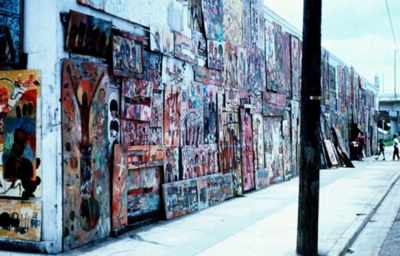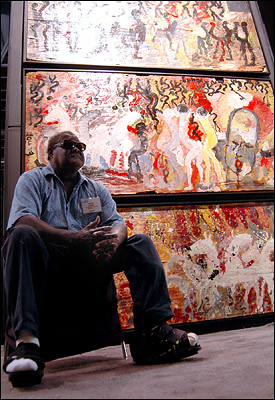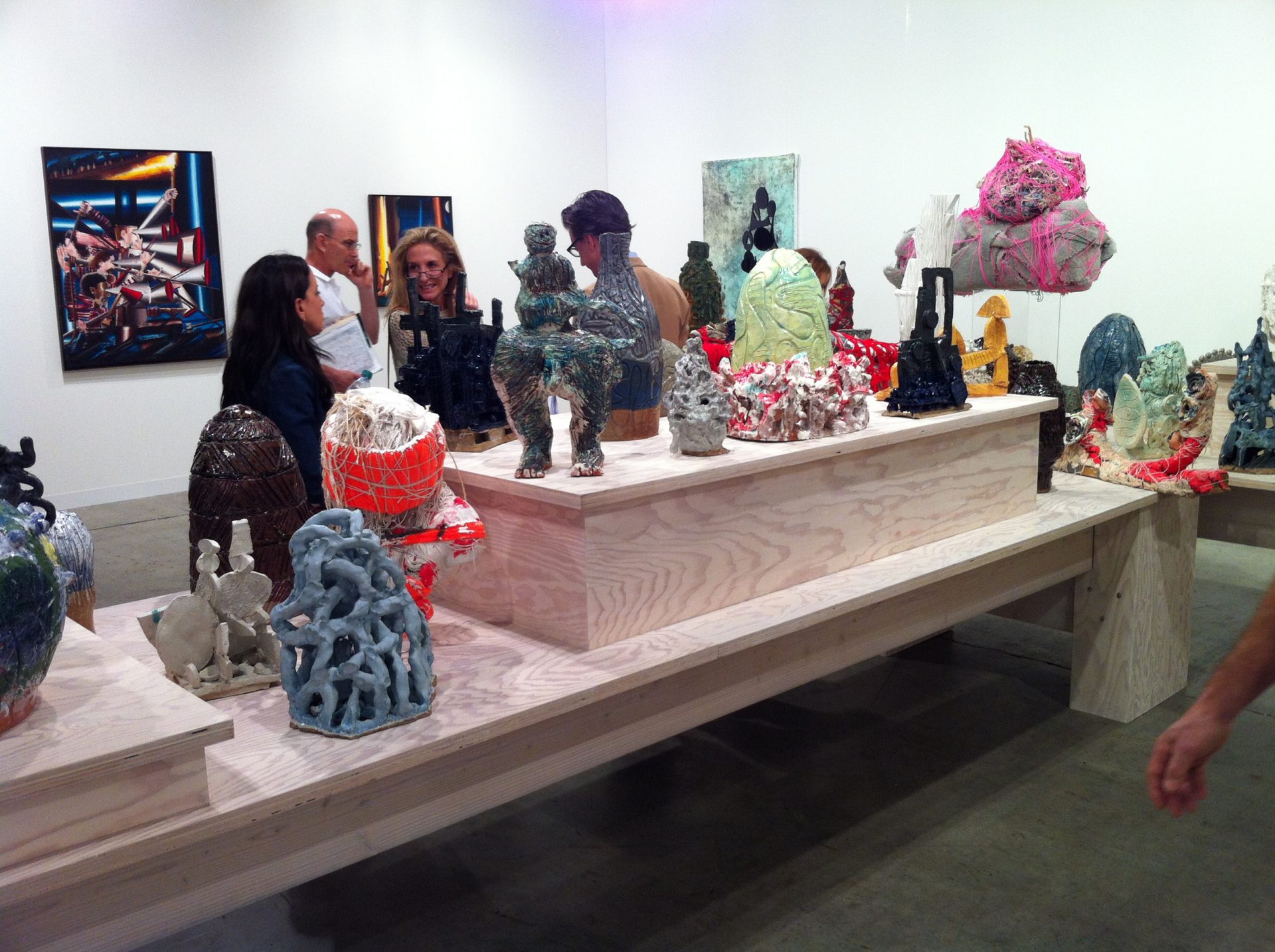
April 21, 2010. Purvis Young, the soul of the indigenous Miami art scene, was generally labeled an “outsider” or “folk” artist, but he was making it happen in Overtown and Liberty City decades before “Wynwood” was able to pronounce the words “Art Basel Miami Beach”.
He died yesterday at the age of 67 at Jackson Memorial Hospital after a long battle with diabetes.
Click here: A video on the life and work of Purvis Young.
from the Miami Herald:
He was one of South Florida’s most storied artists, a man who transformed a troubled life with brush strokes, painting the joys and sorrows of his people on objects discarded in his Overtown neighborhood — a copious body of work that brought Purvis Young international recognition.
Yet Young, who died early Tuesday at Jackson Memorial Hospital after a long battle with diabetes, was penniless and friends were raising money to bury him.
He was 67.
Self-taught, Young loved to tell the story of how he turned his life around in the mid-1960s by painting vibrant murals and conceptualizing mixed-media expressionist works. He said he found his calling after serving a prison term for breaking and entering when an angel told him, “This is not your life.”
Young made exquisite, thoughtful art from the garbage he plucked off the streets of Overtown. Abandoned doors, cardboard, pieces of wood became canvases on which he painted faceless figures and horses that celebrated freedom and angels that he believed healed and guided his life. His interpretation of the flaws and beauty of Overtown introduced the neighborhood to the world of art and vice versa.
“I come alive at night,” he told a Miami Herald reporter in an interview last year. “That’s when I do most of my painting.”
His work was included in all of the major private collections in Miami and was exhibited at major art museums across the country. Several of his works are part of the permanent collection of the Smithsonian American Art Museum.
“Purvis was one of the great geniuses of American art, a remarkable figure,” said Jacquelyn Serwer, chief curator of the Smithsonian’s National Museum of African American History and Culture, which breaks ground in 2012. “He wasn’t particularly nurtured, yet was driven to do this work. He was just one of those people who was born with this extraordinary vision and stayed true to it, producing work that had a kind of mythical quality to it.”
Images of Purvis Young and his work:
















